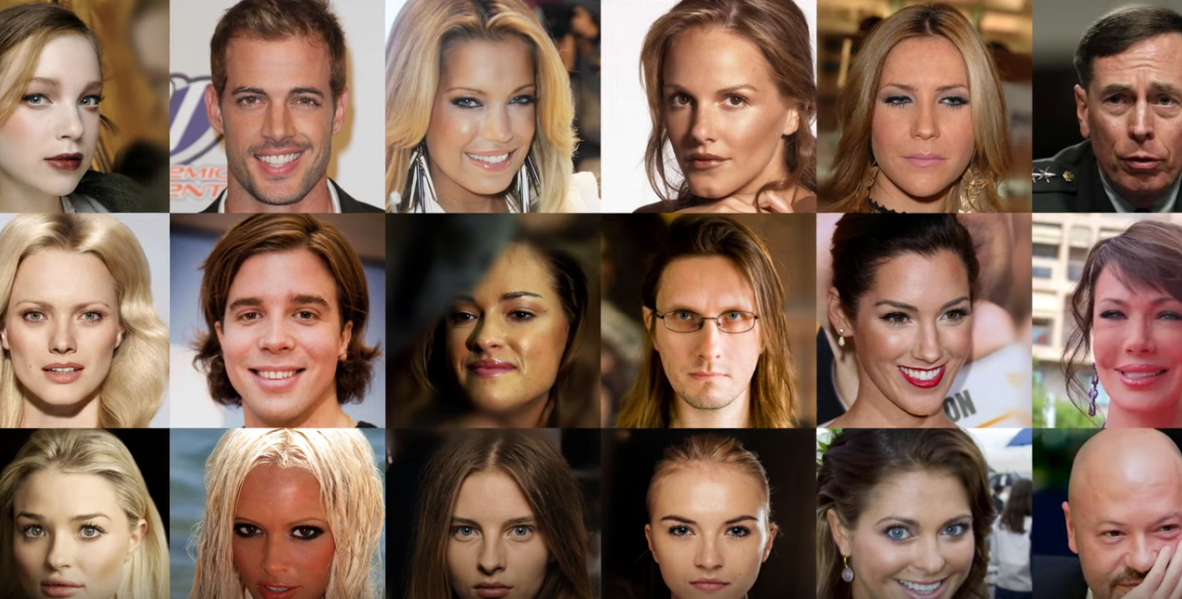
By Heather Hamilton, contributing writer
Nvidia, one of the world’s leading GPU designers, just published a paper detailing its use of generative adversarial network (GAN) in creating high-definition photos of people who don’t actually exist.
Google’s DeepDream experiment has long utilized GAN, as has Mike Tyka, an artist. NVIDIA pits two neural networks against one another, one acting as an image generator and the other as the discriminator, providing a comparison between real samples. Engadget suggests that we think of it as an artist-critic collaboration that works in tandem to modify and improve results. Basically, one algorithm generates a realistic image of something, while the second decides whether it is real or fake. The two work together to create a better image. Essentially, this approach allows the AI to get a broad perspective and then fine-tune the details instead of learning all scales simultaneously.
Nvidia’s method uses a progressive method that takes GAN’s low-resolution images and works up to HD, speeding training up and then stabilizing it, leading to a higher quality of image. The images were sourced from the CelebA HQ database, which means that resulting images are creepily familiar, and yet, not familiar. If you scroll through the images, you’re likely to notice a feature here or there that you can link back to a particular celebrity, though some are mashups that remain just out of reach.
Prior to Nvidia, data obtained via GAN might be used for health care or even fake news — everything from machine-generated training data to fake presidential addresses. Of course, realistic images seemed to be many years off. All of that changed this week when Nvidia released their images.
And, while faces might interest us more, there are more practical (and less scary) applications for this technology. Fashion photography and interior design have the potential to benefit from new GAN technology.
Of course, the system isn’t yet perfect. Occasionally, it misses something, getting symmetry wrong or generating cellphones and laptops in place of TV monitors. The algorithm has difficulty determining whether certain objects should be straight or curved, and higher-pixel resolution images look less realistic. It’s also fairly slow, clocking in at 20 days of training for one high-end GPU supercomputer.
They write, “There is also room for improvement in the micro-structure of the images. That said, we feel that convincing realism may now be within reach.” There’s no telling what might lay ahead if machines can generate convincing images of people and places, but what we think of as fake news may only be the beginning.
Advertisement
Learn more about Electronic Products Magazine





